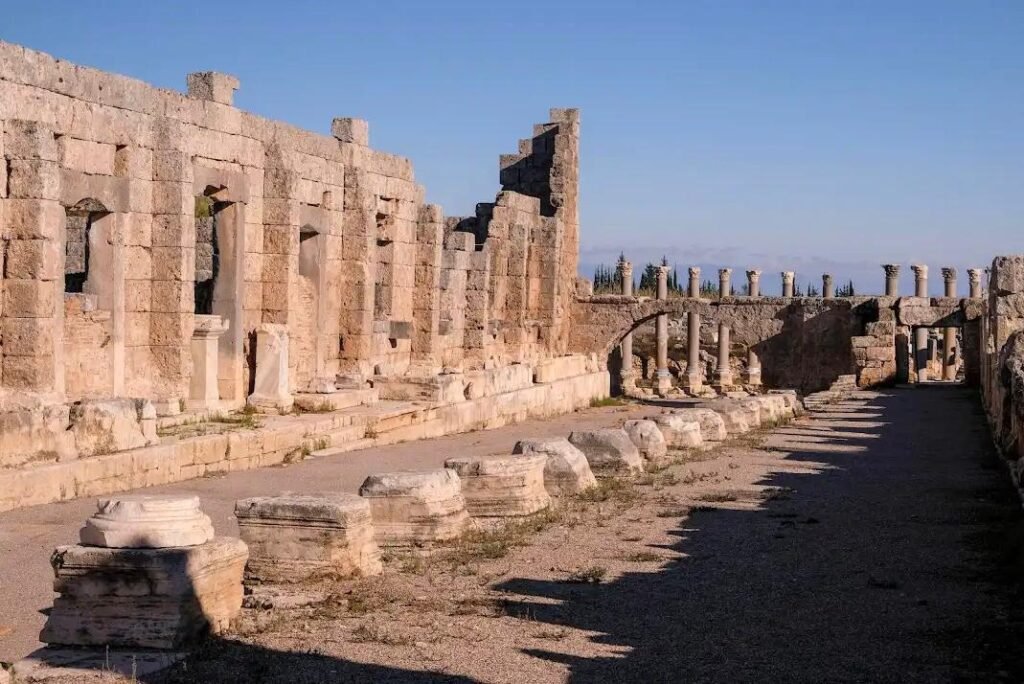Description
Perge Ancient City: A Journey Through Time
Nestled in the heart of Turkey’s Mediterranean region, the Perge Ancient City is a treasure trove of history, culture, and architectural wonder. Located in the Aksu district of Antalya, at Barbaros, Perge Yolu, 07112, this ancient settlement invites visitors to step back in time and explore one of the most important archaeological sites in Anatolia. Its well-preserved ruins offer a glimpse into the grandeur of classical antiquity, making it a must-visit destination for history enthusiasts, tourists, and scholars alike.
Historical Background
Perge’s origins trace back to the Bronze Age, but it gained prominence during the Hellenistic period following Alexander the Great’s conquest in 333 BCE. The city flourished under Roman rule, becoming a cultural and economic hub in the region. Its strategic location near the Köprüçay River allowed it to thrive as a center for trade and agriculture.
The city’s significance also stems from its association with St. Paul, who visited Perge during his missionary journeys. This connection adds a layer of spiritual and historical importance to the site, attracting visitors from around the globe.
Architectural Marvels
Walking through the ruins of Perge is like wandering through a living museum. The city’s layout showcases the ingenuity of ancient urban planning, with its well-organized streets, imposing gates, and impressive structures.
1. The Hellenistic Gate
One of Perge’s most iconic landmarks, the Hellenistic Gate, is a testament to the city’s defensive architecture. Flanked by two cylindrical towers, this gate was once part of the city’s fortification system. The grandeur of its design reflects the city’s prominence during the Hellenistic and Roman periods.
2. The Colonnaded Street
The main street of Perge, lined with marble columns, is a remarkable example of ancient city planning. This colonnaded avenue stretches through the heart of the city, connecting major public spaces and providing a bustling thoroughfare for commerce and daily life. A canal running through the center of the street once provided both water and aesthetic charm.
3. The Roman Baths
The Roman baths in Perge are among the best-preserved structures on the site. These baths were not only places for hygiene but also centers for social interaction and relaxation. The complex includes separate rooms for cold, warm, and hot baths, demonstrating the sophisticated engineering skills of the Romans.
4. The Stadium
Perge’s stadium is one of the largest and most impressive in Asia Minor. With a seating capacity of up to 12,000 spectators, this structure hosted athletic competitions, gladiatorial games, and other public events. The oval-shaped arena and surrounding seating areas offer a vivid picture of ancient entertainment.
5. The Theater
The theater of Perge is another architectural highlight, capable of accommodating approximately 15,000 people. Its elaborate stage decorations and intricate carvings depict scenes from mythology and daily life, providing a window into the artistic achievements of the time.
Religious Significance
Perge was also a center of religious activity, housing temples dedicated to various gods and goddesses. The city’s devotion to Artemis, the goddess of the hunt and nature, is evident in the inscriptions and reliefs found throughout the site. Additionally, the presence of early Christian artifacts and the visit by St. Paul underscore its importance as a spiritual hub.
Archaeological Discoveries
Excavations at Perge began in the 1940s and continue to this day. These efforts have uncovered a wealth of artifacts, including statues, mosaics, inscriptions, and everyday items that provide insights into the lives of its inhabitants. Many of these treasures are now housed in the Antalya Museum, offering a deeper understanding of Perge’s cultural and historical significance.
Visiting Perge
Visiting Perge Ancient City is a journey through time, offering an unforgettable experience for anyone interested in history and archaeology. The site is open to visitors year-round, with guided tours available to help you explore its rich heritage.
Practical Information:
- Location: Barbaros, Perge Yolu, 07112 Aksu/Antalya
- Distance from Antalya City Center: Approximately 18 kilometers (11 miles)
- Operating Hours: Typically from 8:00 AM to 7:00 PM (hours may vary seasonally)
- Entrance Fee: A nominal fee is charged, with discounts for students and groups
- Facilities: The site features a visitor center, parking area, and restrooms
Tips for Visitors
- Wear Comfortable Shoes: The site covers a large area with uneven terrain, so sturdy footwear is essential.
- Bring Water and Sunscreen: The Mediterranean sun can be intense, especially during summer months.
- Hire a Guide: To fully appreciate the historical and architectural details, consider joining a guided tour.
- Visit the Antalya Museum: Complement your visit to Perge by exploring the artifacts displayed at the nearby museum.
- Plan for Time: Allocate at least 2-3 hours to explore the site thoroughly.
Conclusion
Perge Ancient City stands as a testament to the grandeur of ancient civilizations and their enduring legacy. From its majestic gates and streets to its grand theaters and temples, every corner of Perge tells a story of innovation, culture, and resilience. Whether you are a history buff, a curious traveler, or someone seeking inspiration, Perge promises an enriching experience that lingers long after your visit. Make it a part of your journey through Turkey and witness the splendor of an era gone by.
Location
-
Barbaros, Perge Yolu, 07112 Aksu/Antalya









